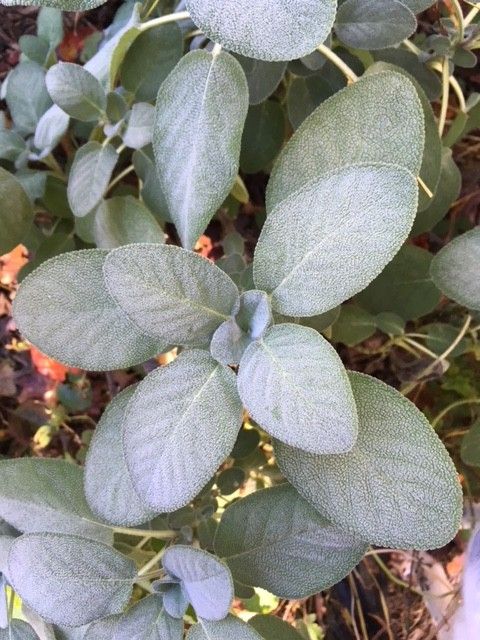
Every year when Thanksgiving rolls around, folks get out their spice jars of neglected, little used sage–albeit some buy it fresh, and then there are those of us fortunate gardeners who grow sage–and we go out to the herb bed and cut branches to use in our dinner. Sage is the most common herb used in turkey stuffing… and not much else. I think of sage as a cool-weather herb and use it often as a cooking ingredient in the cold fall and winter months. Besides its traditional uses in sausages and with poultry, game, and liver, sage can add a rich and graceful note to vegetables, breads, and sweets.
Sage soothes both youth and age,
and brings the cook pleasing praise.
—Carolyn Dille and Susan Belsinger Herbs in the Kitchen
Sage’s culinary use with rich dishes probably came from its reputation as a digestive. It was very highly held as a medicinal plant by the Greeks and Romans. Its principal use was as a calmative for the stomach and nerves. Regular use of sage tea was said to confer an even disposition to excitable natures and a healthy old age to everyone. Swiss peasants and American Indians used sage as a dentifrice, first chewing a few leaves, then brushing the gums with a twig.
Sage is much respected culinarily in England and Italy, where most country gardens have a sage bush, often fifteen years or older. The flavor from good sage stock does not deteriorate with age, but sage varies in flavor as much as some of the more delicate herbs, depending on its soil and weather conditions. Dalmatian sage from Yugoslavia is esteemed because the camphor odor is less pronounced than in sage grown in different climates. This aroma is also milder in the fresh leaf. The flavor of fresh sage has decided lemon rind tones over resin. The lemon flavor recedes and the camphor, and a pleasant muskiness similar to silage, comes forward when sage is dried.
Common sage (Salvia officinalis) seems to keep its aroma and flavor through cooking and drying. Dwarf sage ‘Nana’, white-flowered sage ‘Alba’, and purple-leaved sage ‘Purpurascens’ and the wide-leaved, German ‘Berggarten’ are all handsome varieties of common sage, with good flavor and aroma and are delightful plants to have in our gardens as well as our kitchens.
Sage graces the garden with its soft grey-green foliage providing a pleasing contrast to the bright green hues of most other culinary herbs. It will grow to a bush about four feet in diameter, keeping a well-rounded shape with little pruning in mild climates. Even though we have had freezing nights, my sages are still standing handsomely in the Mediterranean bed and harvestable right now.
All of the sages should have a well-drained or gravelly soil and some added calcium like oyster shell (chicken grit) where it is lacking in the soil. Sage needs full sun and will survive through cold winters if well mulched. It should be pruned in the early spring to encourage new growth. A good practice to follow is mulching sage with an inch or two of sand. That, and the careful sanitation of removing weeds and dead leaves will usually suffice to spare the plants from the soil-borne wilt diseases to which they are susceptible.
Like most herbs, sage should be dried in a warm dry place away from sun. Once the leaves are completely dry they should be stored whole in airtight containers. Sage should be crumbled, never ground, as needed for cooking; grinding completely destroys the delicate lemony perfume and leaves the harsher resinous flavors.
Here are 10 of my favorite things to do with sage:
1. Well of course use it in stuffing–my favorite is with cornbread, pecans, apple and sage.
2. Pasta e fagioli–Tuscan bean and pasta soup just isn’t authentic without the flavor of sage. /item/7927/pasta-e-fagioli
3. I think my favorite way to eat a sage leaf is sauteed briefly in olive oil or butter and used to top a dish of pumpkin ravioli (although I can eat the leaves prepared this way out-of-hand like potato chips!).
4. Sage is wonderful with or in any bread–I like it on focaccia with onions, olive oil and coarse sea salt, maybe some olives; in my skillet cornbread with chiles and cheese; and combined with rosemary and onions in my Tuscan herb bread.
5. Whole sage leaves add the perfect counterpoint to cubes of winter squash, when roasted in a hot oven with garlic, olive oil and salt and pepper–until squash is crisp on the outside and tender on the inside.
6. Adds a delightful surprise, when a few leaves are added to stewed apples, homemade applesauce or apple butter with a little honey–it works equally well with pears
7. Use in place of cilantro in a winter tomato salsa or in tomato sauce instead of oregano.
8. Added to any pot of beans–from savory tomato baked beans to black beans, pinto, cannellini and even green beans–the earthiness of sage adds just the right touch of flavor.
9. I use it to make my popular sage apple cake, lining the bottom of the generously buttered bundt pan with sage leaves, thinly sliced apples and brown sugar before pouring the batter in.
10. Last though not least, there is nothing like a simple cup of sage tea with a bit of honey and lemon; it is both subtle and slightly bitter. Because of its antioxidant properties, it helps one to digest a rich meal. An infusion of hot water steeped with sage leaves is soothing and healing as a gargle for sore throats and maladies of the mouth (good before or after any kind of dental work).
Hoping this list inspires you to use some fresh sage in your cooking soon! Salvia comes from salvere, “to be well” and sapere, “to taste” or ” to know”. It is certainly wise to know sage well!


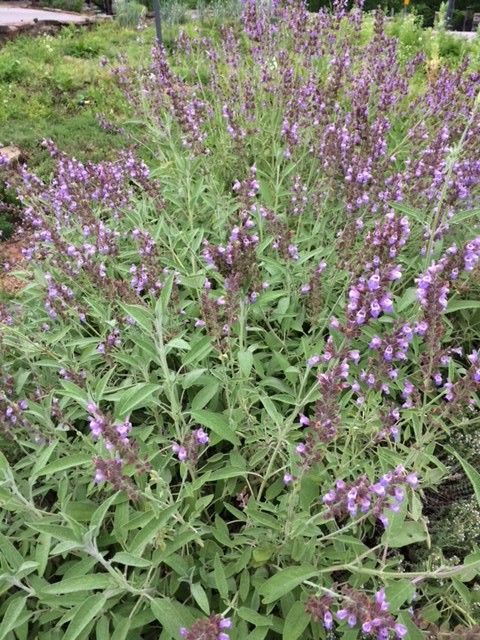
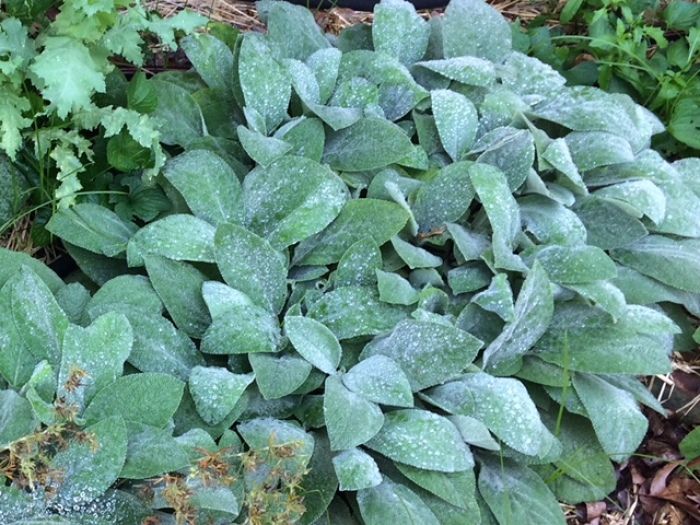
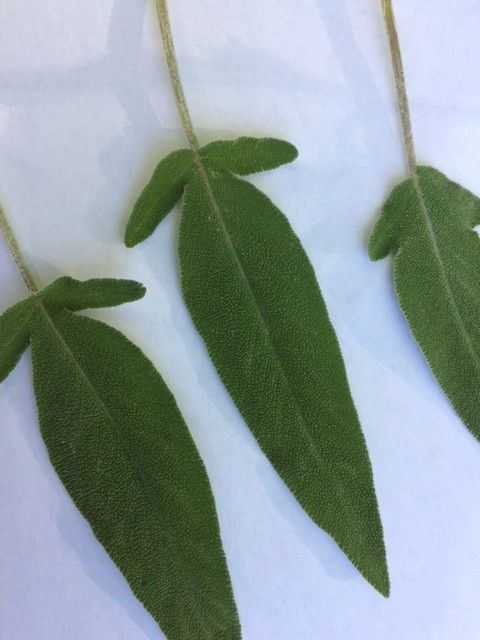
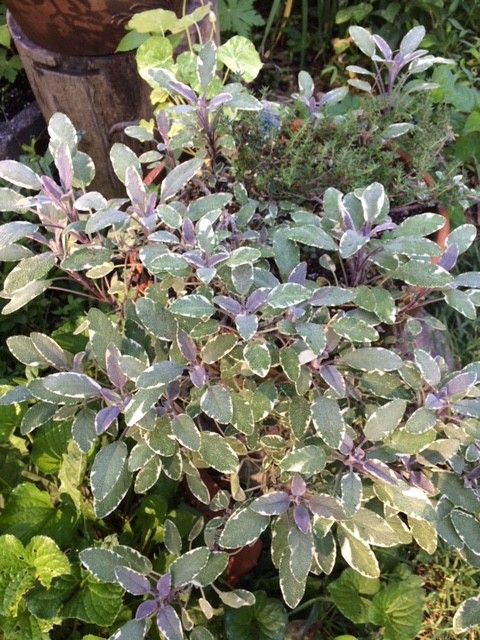
















Comments
Log in or create an account to post a comment.
Sign up Log in